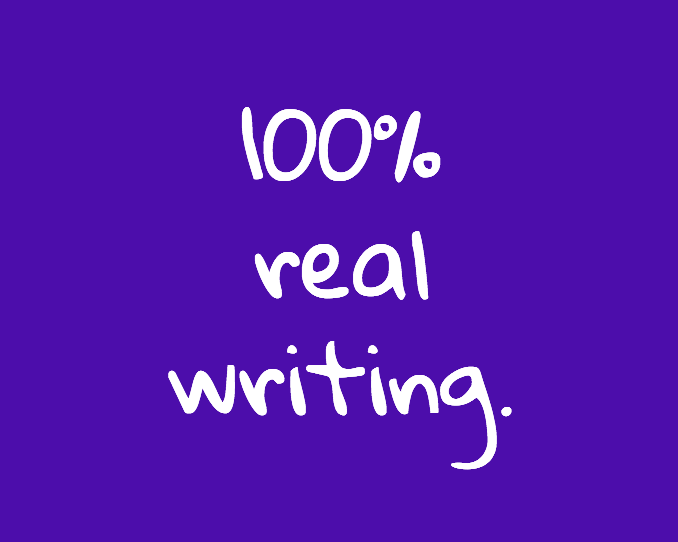“Not real writing”? If you really wrote it, it’s real enough.
“I’m sorry if this is not real writing…”
 One of my writers began her latest post with that disclaimer. What followed was not only real writing, it was spectacular writing. The best she’s done to date. Detailed, evocative. She put us right in the scene, all but allowing us to shake her subject’s hand.
One of my writers began her latest post with that disclaimer. What followed was not only real writing, it was spectacular writing. The best she’s done to date. Detailed, evocative. She put us right in the scene, all but allowing us to shake her subject’s hand.
So what is “real writing”?
If you pick up a pen or sit down at a keyboard and the movement of your fingers produces words, you are writing. Really.
She described her piece as more like journaling. Which—to be clear—also meets the definition of “real writing” I set out in the previous paragraph.
Journaling—I wonder if that’s why my writer decided this couldn’t be “real writing.” No one sweats over a diary entry, right? You don’t care what you write because you’re the only person reading it. (Unless you grew up with my parents, but that’s a story for another time.)
Journaling can be like morning pages—you just sit down and let the words tumble out.
And that is some of the realest “real writing” you can do.
Real writing and trust
Have you read Anne Lamott‘s book Bird by Bird? It’s one of those books that presents me with something new every time I open it. Like this—which I re-read only last night, just in time to support my “real writer.”
“You need to trust yourself, especially on a first draft, where amid the anxiety and self-doubt, there should be a real sense of your imagination and your memories walking and woolgathering, tramping the hills, romping all over the place. Trust them.”
Because my writer thought she was journaling, the anxiety and self-doubt fell away. And all that was left was the story and her keyboard, with her fingers as intermediary
The ease my writer experienced—that’s the promised land for writers. We don’t get to go there every time, and sometimes our trips are maddeningly brief. But when we’re there we should celebrate. After we’re done writing, of course.